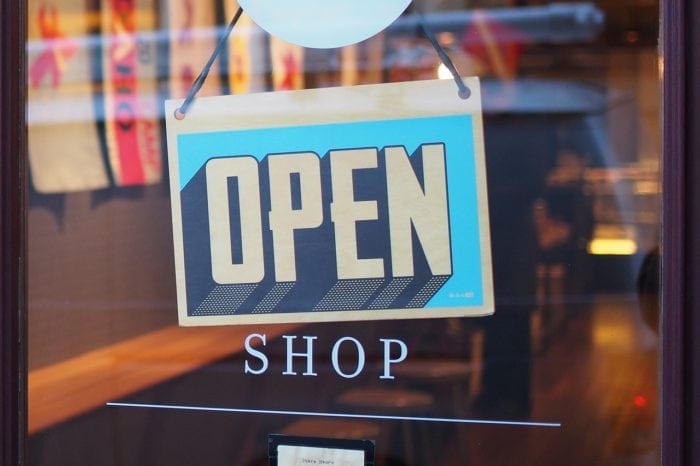Reflecting on Life Before the Americans with Disabilities Act
Published onOn July 26, 1990, the Americans with Disabilities Act (ADA) became a Civil Rights Law and anti-discrimination law. The ADA mandates equal access to goods, services, and communication; and physical barriers must be removed for people with disabilities.
When Discrimination was Legal
In the early 80s my mom and I walked into a jewelry store. My mom had her guide dog with her and the owner of the store threw us out. He stated that she couldn’t afford anything in the store. But, he underestimated her buying power and left a lasting impression on my life. His actions were not just rude and hurtful, this was discrimination and, at the time, it was legal. My mother was denied access to purchase and view goods based on her disability.
This practice of discrimination reached far beyond her experience at the store. It occurred in real estate purchases and rentals, it occurred in financing, and in education, to name a few. There were some laws in place, but either due to non-enforcement or loopholes, discrimination against a person with a disability was an acceptable practice.
Inequality in Practice
Now, discrimination wasn’t always an outright denial of services. There were often physical barriers in place that created an uneven playing field for many people. A hospital, bank, pharmacy, store, post office, and the like were not accessible to wheelchairs or people with limited mobility. Communication barriers prevented equal access to information, goods, and services for people who were blind or had a visual impairment with printed documents being in the standard printed text.
Imagine not being able to read your sensitive documents, pay your bills, read a pill bottle, or balance your finances. My dad, who is also blind, used to pay high school students to read his billing statements, help manage his finances, and handle personal documents. Eventually, I took over in that duty when I was proficient at reading and writing. How many people want a high school student or their child to have access to personal finances and sensitive information?
In 1990, the ADA provided the legal right to equality and the complete removal of communication barriers.
Fast-forward to 2022, my parents have equality, right? Sadly, no. This has been a slow process that involved amendments and white papers. Many organizations treat equality for people with disabilities as an option rather than a requirement. Can you imagine? The ADA has been a law for 32 years, and many organizations still are not providing equal access.
What does equality look like?
I can share what it looks like for my parents. They should be able to receive sensitive documents in a format that they can review in private. This might be braille, audio, or digital; it depends on the type of document or information. In the same way a person who is sighted might want to have access to a hard copy of a document. This is a limited example of accessibility.
I’ve asked around about the lack of equality/accessibility, and I am met with a version of the following, “We will deal with it when it becomes a problem,” or “How many people really read braille?” or “That might be costly.” However, these answers are justifications for the discrimination. Imagine if people looked at accessibility as a benefit rather than a burden.
If organizations truly understood the buying power of people with disabilities, they would see the benefits of accessibility. Finding a niche is a key component to the success of an organization. People are looking to do business with organizations that they can feel good about. Readily including everyone, the definition of inclusion and non-discrimination, is a benefit.
 Advocacy Keeps the ADA Alive and Moving Forward
Advocacy Keeps the ADA Alive and Moving Forward
I recall, in 1994 sitting in Columbus, Ohio at a table filled with people who have disabilities. This was the first group of ADA advisors to the Governor of Ohio, George Voinovich. Plus, these people were the most powerful advocates I had ever met. Among those people was my dad, and the founder of Braille Works, Lou Fioritto. I saw my dad in a new light; he was an advocate for people with disabilities and an advisor to the Governor. I was able to learn from everyone at the table. The biggest lesson that I learned was they were just like me; they only needed some accommodations or modifications to navigate the world in the same way.
So, in this 32nd year of the Americans with Disabilities Act ask yourself if you are a passive participant in acceptable discrimination. Chances are we all can answer yes to this question. I am guilty of dining in a restaurant that doesn’t offer braille or large print menus (although I try to stick to the ones that offer accessibility). My doctor’s office doesn’t have any accessible materials, my bank has a limited amount of compliant materials, and the grocery store that I frequented was found to be non-compliant in providing digital access to a person who is blind.
I take pride when I sit down at a restaurant that offers braille and large print menus. And, I am thrilled when my mom can check her banking statements and pay her bills electronically. Watching my dad enjoy social media is something small in the grand scheme of disability rights, but it shows how far society is coming. However, these conveniences are a sliver of their Civil Rights that stemmed from the 1990 Americans with Disabilities Act.
Categorized in: Accessibility, Informational, Uncategorized
This post was written by






Comments are closed here.